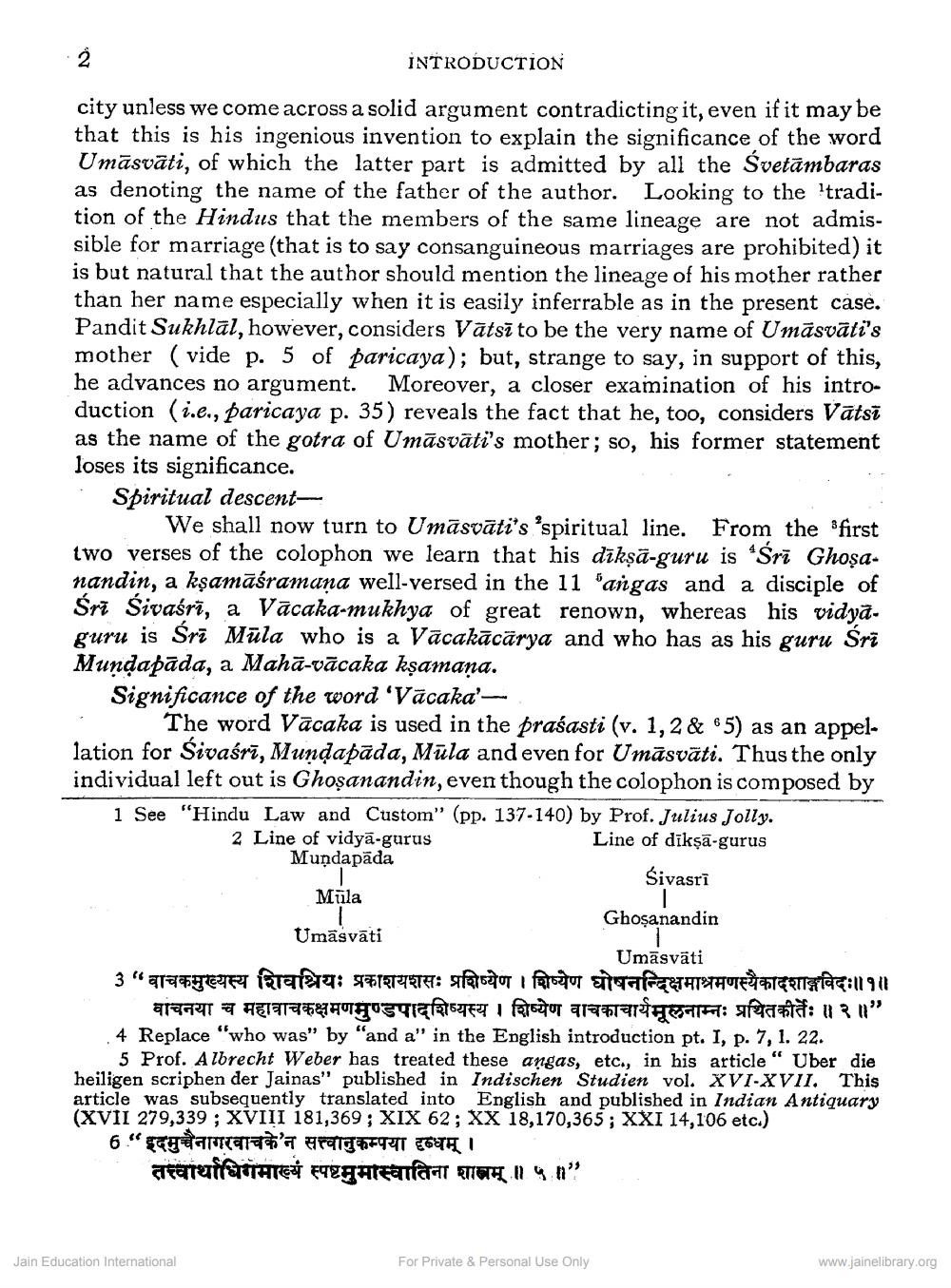________________
INTRODUCTION
city unless we come across a solid argument contradicting it, even if it may be that this is his ingenious invention to explain the significance of the word Umāsvāti, of which the latter part is admitted by all the Svetāmbaras as denoting the name of the father of the author. Looking to the 'tradition of the Hindus that the members of the same lineage are no sible for marriage (that is to say consanguineous marriages are prohibited) it is but natural that the author should mention the lineage of his mother rather than her name especially when it is easily inferrable as in the present case. Pandit Sukhlal, however, considers Vātsī to be the very name of Umāsvāti's mother ( vide p. 5 of paricaya); but, strange to say, in support of this, he advances no argument. Moreover, a closer examination of his introduction (i.e., paricaya p. 35) reveals the fact that he, too, considers Vātsi as the name of the gotra of Umāsvāti's mother; so, his former statement loses its significance. Spiritual descent
We shall now turn to Umāsvāti's 'spiritual line. From the first two verses of the colophon we learn that his dikşā-guru is "Śrī Ghosanandin, a kşamāśramana well-versed in the 11 'angas and a disciple of Sri Sivasri, a Vācaka-mukhya of great renown, whereas his vidyā. guru is Śrī Müla who is a Vācakācārya and who has as his guru Sri Mundapāda, a Mahā-vācaka kşamaņa. Significance of the word 'Vācaka
The word Vācaka is used in the praśasti (v. 1,2 & 65) as an appellation for Sivaśrī, Mundapāda, Mula and even for Umāsvāti. Thus the only individual left out is Ghoşanandin, even though the colophon is composed by 1 See "Hindu Law and Custom” (pp. 137-140) by Prof. Julius Jolly. 2 Line of vidyā-gurus
Line of dikşā-gurus Munda pada
Sivasri Müla
Ghoşanandin Umāsvāti
Umāsväti 3 "वाचकमुख्यस्य शिवश्रियः प्रकाशयशसः प्रशिष्येण । शिष्येण घोषनन्दिक्षमाश्रमणस्यैकादशाङ्गविदः॥१॥
वाचनया च महावाचकक्षमणमुण्डपादशिष्यस्य । शिष्येण वाचकाचार्यमूलनाम्नः प्रथितकीर्तेः ॥२॥" 4 Replace "who was" by "and a" in the English introduction pt. I, p. 7, 1. 22.
5 Prof. Albrecht Weber has treated these angas, etc., in his article" Uber die heiligen scriphen der Jainas" published in Indischen Studien vol. XVI-XVII. This article was subsequently translated into English and published in Indian Antiquary (XVII 279,339 ; XVIII 181,369 ; XIX 62; XX 18,170,365; XXI 14,106 etc.) 6."yaaraat aragareT GETEI
तत्त्वार्थाधिगमाख्यं स्पष्टमुमास्वातिना शास्त्रम् ॥ ५॥"
Jain Education International
For Private & Personal Use Only
www.jainelibrary.org




